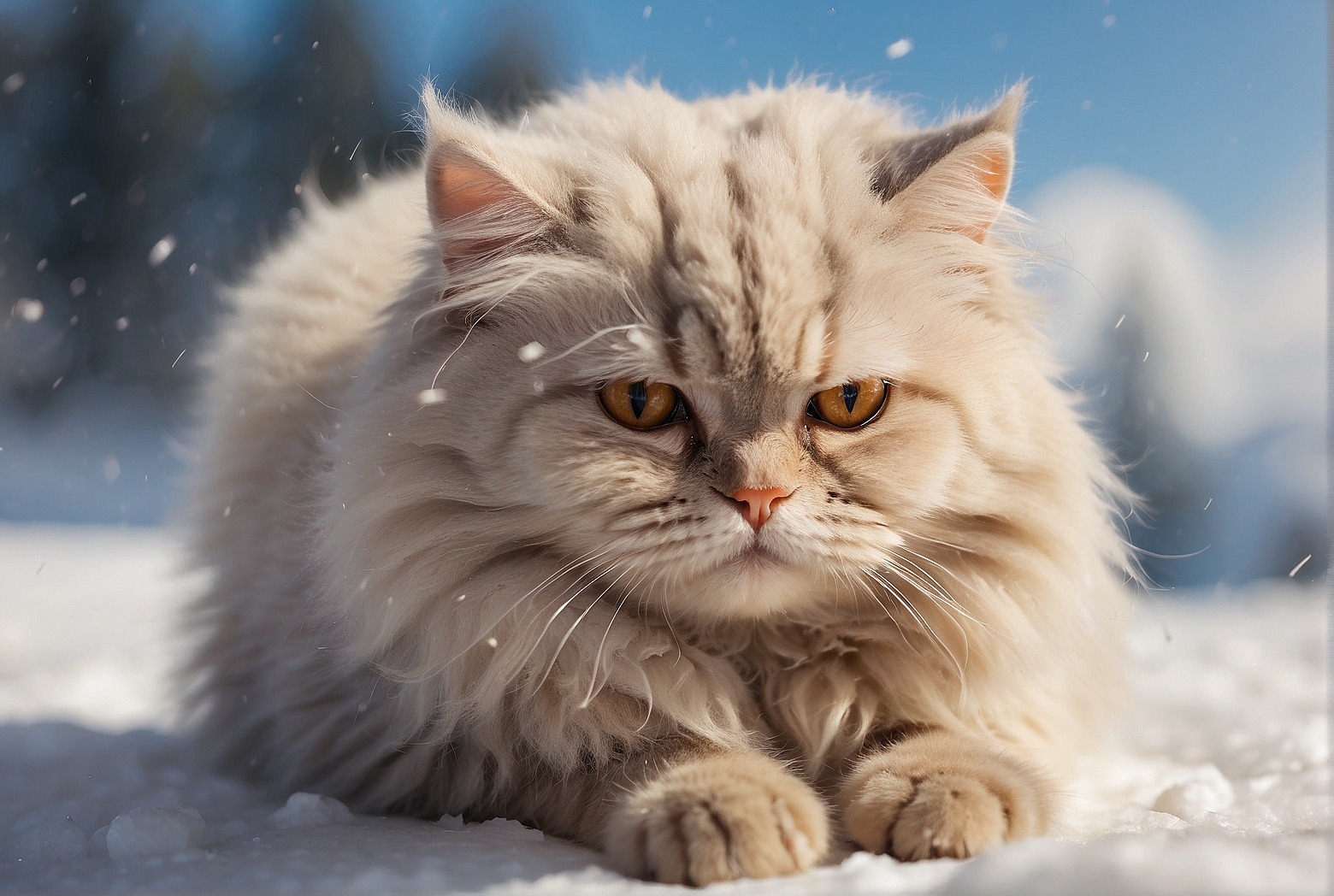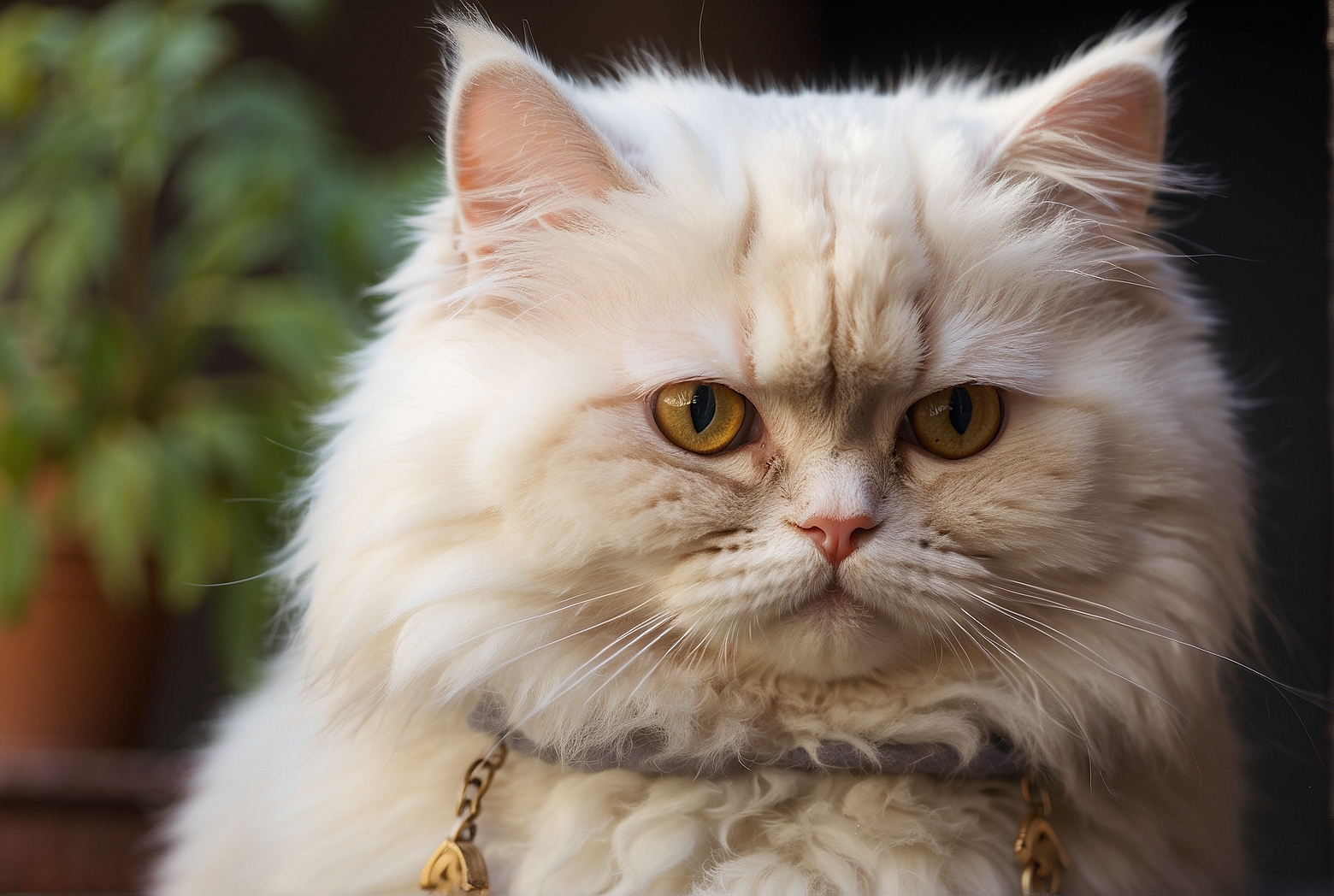Do you have a Persian cat and find yourself wondering what temperature is ideal for their comfort? Persian cats are known for their luxurious coats and gentle demeanor, and ensuring they are kept in a suitable temperature is crucial for their well-being. In this article, we will explore the optimal temperature range for Persian cats, providing you with valuable insight on how to keep your feline friend happy and content. Whether it’s summer or winter, understanding the temperature that will keep your Persian cat comfortable is essential for their health and happiness.
Ideal Room Temperature
Understanding Persian Cats’ Sensitivity to Temperature
Persian cats are known for their long, luxurious coats, but this also means that they have a higher sensitivity to temperature compared to other cat breeds. These fluffy felines are not well-suited for extreme weather conditions, whether it’s extreme cold or heat. It’s important for Persian cat owners to understand their pet’s temperature needs and take the necessary steps to ensure their comfort and well-being.
Maintaining a Comfortable Indoor Temperature
One of the key factors in providing a comfortable environment for your Persian cat is maintaining the right room temperature. A moderate room temperature is recommended to keep your feline friend happy and content. The ideal range for most Persian cats is between 68 to 75 degrees Fahrenheit (20 to 24 degrees Celsius). This range provides a balance between warmth and coolness, allowing your cat to feel comfortable in their surroundings.
Recommended Room Temperature for Persian Cats
While the recommended room temperature for most Persian cats falls within the range of 68 to 75 degrees Fahrenheit (20 to 24 degrees Celsius), it’s essential to consider individual variations and preferences. Some Persian cats may prefer slightly higher temperatures, while others may be more comfortable in slightly cooler environments. Observe your cat’s behavior and adjust the thermostat accordingly to find the optimal temperature that suits their needs.
Outdoor Temperature Considerations
Adapting to Varying Outdoor Temperatures
While Persian cats are primarily indoor pets, they may occasionally venture outdoors. It’s crucial to be aware of the outdoor temperature and make adjustments accordingly to ensure your cat’s safety and well-being. Persian cats have limited tolerance for extreme temperatures, so it’s best to avoid exposing them to excessively hot or cold weather conditions.
Ensuring a Safe Environment
When your Persian cat is outdoors, ensure they have access to shaded areas that provide relief from the sun’s heat. This can be achieved by placing a sunshade or providing shelter in the form of trees or a cat enclosure. Similarly, during cold weather, it’s essential to monitor the duration and exposure to low temperatures. Limit your cat’s outdoor time and provide them with a warm environment indoors to prevent any discomfort or potential health issues.

Signs of Discomfort in Extreme Temperatures
Extreme temperatures can have adverse effects on your Persian cat’s health. It’s crucial to watch for signs of discomfort or distress in your pet. Excessive panting, lethargy, shivering, or seeking warm or cool surfaces are all indicators that your cat may be experiencing discomfort due to temperature extremes. If you notice any of these signs, it’s necessary to take immediate action and provide the appropriate measures to help regulate their body temperature.
Temperature Regulation Aids
Using Fans to Circulate Air
Ensuring proper air circulation is vital in maintaining a comfortable indoor temperature for your Persian cat. Fans can be an effective aid in keeping the air moving and preventing the buildup of heat. Positioning fans strategically in the room can help distribute cool air or dehumidify the space during hot and humid weather. Remember to keep fans at a safe distance from your cat to avoid any accidents.
Providing Cooling Mats or Pads
Cooling mats or pads are excellent tools to help your Persian cat regulate their body temperature during hot weather. These mats are designed to absorb heat from your cat’s body, providing a cooling sensation. Place the cooling mat in your cat’s favorite resting spot or wherever they tend to spend most of their time. This will ensure they have a comfortable and cool surface to lie on, even when the temperatures rise.
Utilizing Thermostats or Temperature Control Devices
Investing in a thermostat or temperature control device can greatly assist in maintaining a consistent and comfortable indoor temperature for your Persian cat. These devices allow you to set and regulate the temperature in your home, ensuring your cat never has to endure extreme heat or cold. This way, you can have peace of mind knowing that your furry friend is always in a cozy environment.
Dealing with Cold Weather
Recognizing the Persian Cat’s Lower Cold Tolerance
Due to their longer fur and body shape, Persian cats have a lower tolerance for cold weather. It’s important to pay extra attention and take additional measures during the winter months to keep your cat warm and cozy. Extreme cold temperatures can lead to discomfort, hypothermia, or even frostbite in your Persian cat if not adequately protected.
Creating Warm and Cozy Spaces
To provide warmth and comfort for your Persian cat during cold weather, create cozy spaces in your home where they can seek refuge. Place soft blankets, heated beds, or even a cozy cat igloo in a warm and draft-free area. These designated warm spots will give your cat a safe space where they can curl up and stay warm during chilly days and nights.

Using Insulated Pet Beds or Blankets
Insulated pet beds or blankets can be essential tools in helping your Persian cat stay warm and comfortable during colder seasons. These specialized beds or blankets are designed to retain heat, providing an extra layer of insulation. Place these cozy items in areas where your cat likes to rest or sleep, ensuring they have a warm sanctuary to retreat to when they need it most.
Coping with Hot Weather
Persian Cats’ Susceptibility to Heat
Hot weather can pose serious risks to Persian cats due to their sensitivity to heat. Their long coats can trap heat, making them prone to overheating and heat exhaustion. It’s crucial to take proactive measures to keep your Persian cat cool and prevent any heat-related health issues.
Keeping Indoors Cool and Shaded
During hot weather, it’s vital to keep the indoors as cool and shaded as possible. Close curtains or blinds during the hottest parts of the day to prevent direct sunlight from entering the room. This will help maintain a lower temperature indoors and ensure your Persian cat has a comfortable space to relax and cool down.
Offering Access to Drinking Water
Stay hydrated is essential for Persian cats to regulate their body temperature in hot weather. Ensure there are multiple sources of fresh and cool water available throughout your home. Consider placing water bowls in various locations, so your cat has easy access to water wherever they go. Additionally, you can add ice cubes to their water bowl to provide an extra cooling effect.
Monitoring and Adjusting Temperature
Using Thermometers to Track Indoor Temperature
To ensure you are maintaining the ideal room temperature for your Persian cat, use a thermometer to track the temperature accurately. Place the thermometer in a central location that reflects the overall temperature of the room. Regularly monitor the readings and make adjustments based on your cat’s needs and the outside weather conditions.
Pay Attention to Cat’s Behavior and Comfort Level
Your Persian cat’s behavior and comfort level can provide valuable insights into whether the current temperature is suitable for them. Pay attention to any signs of discomfort, such as excessive panting, excessive grooming, seeking warm or cool surfaces, or restlessness. These behaviors indicate that your cat may not be adequately comfortable with the temperature and may require adjustments.
Making Adjustments Based on Temperature Changes
Temperature changes, both indoors and outdoors, can occur suddenly or gradually. It’s important to adapt accordingly and make any necessary adjustments to maintain a comfortable environment for your Persian cat. If the weather is becoming hotter or colder, adjust your thermostat or temperature control device accordingly to ensure your cat’s well-being.
Humidity Considerations
Understanding the Impact of Humidity
In addition to temperature, humidity levels can also affect your Persian cat’s comfort and health. High humidity can make your cat feel sticky and uncomfortable, while low humidity can cause dry skin and nasal congestion. Maintaining optimal humidity levels is crucial to ensure your Persian cat’s well-being.
Maintaining Optimal Humidity Levels
The ideal humidity range for Persian cats is typically around 40 to 60 percent. To maintain these levels, consider using a humidifier or dehumidifier when necessary. A humidifier can add moisture to dry air during colder months, while a dehumidifier can help reduce excess moisture during more humid seasons. By regulating humidity levels, you can create a more comfortable environment for your Persian cat.
Using Humidifiers or Dehumidifiers as Needed
If you live in an area with consistently high or low humidity, it may be beneficial to use a humidifier or dehumidifier throughout the year. However, it’s important to regularly monitor the humidity levels and adjust the device accordingly to maintain the recommended range. Consider consulting with a veterinarian or an HVAC specialist to determine the appropriate humidity levels based on your specific location and climate.
Seasonal Temperature Changes
Preparing for Seasonal Variations
Seasonal changes can bring drastic temperature variations, requiring adjustments to ensure your Persian cat’s well-being. Before each season, it’s important to assess your home’s heating and cooling systems, as well as the insulation, to prepare for the upcoming weather conditions. Taking proactive steps can help you create a suitable environment for your cat amidst the changing seasons.
Adjusting Temperatures During Winter and Summer
Winter and summer are the seasons with the most extreme temperature conditions. During winter, ensure your home is adequately insulated, and the heating system is functioning properly to provide warmth for your Persian cat. In summer, focus on keeping your home cool, shaded, and well-ventilated to protect your cat from excessive heat and humidity. Regularly monitor the temperatures and make any necessary adjustments to ensure your cat’s comfort.
Addressing Climate Control Challenges
Climate control challenges may arise when there is a significant difference between the outdoor and indoor temperatures. Take precautions to minimize temperature fluctuations and drafts by sealing any windows, doors, or cracks that may cause heat or cold air to leak in. By addressing these challenges, you can help maintain a comfortable environment for your Persian cat throughout the year.
Avoiding Extreme Temperature Fluctuations
The Dangers of Rapid Temperature Changes
Rapid temperature changes can be particularly harmful to Persian cats. Transitioning from extreme cold to extreme heat, or vice versa, without sufficient time for adaptation can put a significant strain on their bodies. It is important to avoid exposing your Persian cat to sudden and drastic temperature fluctuations to prevent stress, illness, or other potential health complications.
Gradual Adjustments to Climate Changes
When transitioning between different temperature conditions, it’s essential to make gradual adjustments to allow your Persian cat to acclimate comfortably. Slowly increase or decrease the temperature over a few days to give your cat’s body time to adjust accordingly. By taking this gradual approach, you can ensure your cat’s well-being and reduce the risk of temperature-related health issues.
Seeking Professional Advice if Necessary
If you are unsure about the best ways to regulate the temperature for your Persian cat or encounter specific challenges with climate control, it is always advisable to seek professional advice. Consult with a veterinarian or an HVAC specialist who can provide guidance tailored to your cat’s individual needs and help you create a safe and comfortable environment throughout the year.
Additional Tips for Temperature Management
Providing Sunlight Exposure and Fresh Air
In addition to maintaining the ideal room temperature, it’s important to provide your Persian cat with appropriate exposure to sunlight and fresh air. Opening windows or using cat-safe screens can allow them to enjoy the natural breeze and observe their surroundings. Sunlight exposure aids in their overall well-being and helps regulate their internal body temperature.
Avoiding Direct Drafts or Heat Sources
While it’s important to provide fresh air, be mindful of direct drafts, as they can cause discomfort for your Persian cat. Ensure windows are properly sealed and avoid placing their resting spots in direct paths of cold air from air vents or drafts. Similarly, keep your cat away from direct heat sources like radiators or space heaters to prevent overheating.
Consulting a Veterinarian for Specific Guidance
Every Persian cat is unique, and their temperature needs may vary. If you have specific concerns or questions about maintaining the ideal temperature for your Persian cat, it’s best to consult with a veterinarian. They can provide expert advice tailored to your cat’s individual characteristics, age, health, and environmental factors.
In conclusion, maintaining the ideal room temperature for your Persian cat is crucial for their comfort and well-being. By understanding their sensitivity to temperature, adapting to outdoor conditions, providing temperature regulation aids, and monitoring their comfort level, you can create a safe and enjoyable environment for your beloved feline friend. With proper temperature management, you can ensure that your Persian cat stays happy, healthy, and content in any weather condition.
